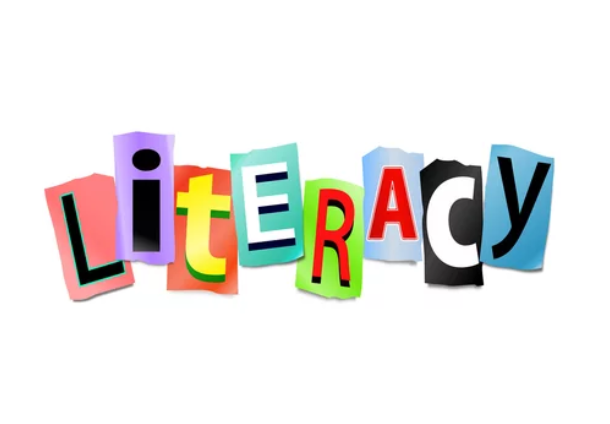Critical literacy skills are essential for students in today’s information-rich world. These skills enable students to analyze, interpret, and question the texts they encounter, helping them make informed decisions and participate fully in society. This blog post explores strategies for developing critical literacy skills in students, with examples of how these strategies can be effectively implemented in the classroom.

Check out our Free English/Literacy Worksheet Generators
What is Critical Literacy?
Critical literacy goes beyond basic reading and writing skills. It involves the ability to analyze the purpose, audience, and context of a text, recognizing underlying messages, biases, and perspectives. Developing critical literacy skills empowers students to think critically about the information they consume, making them more aware of how texts can influence their thoughts and actions.
Why Critical Literacy Matters
In a world filled with information from diverse sources, critical literacy is vital. It equips students with the ability to:
- Question the validity of information.
- Understand the influence of media and texts.
- Make informed decisions.
- Engage in meaningful discussions.
By fostering these skills, educators can help students become critical thinkers who are prepared to navigate the complexities of modern society.
Strategies for Developing Critical Literacy Skills
1. Encourage Questioning and Discussion
One of the most effective ways to develop critical literacy skills is by encouraging students to ask questions and engage in discussions about the texts they read. Teachers can model this by asking questions like:
- Who created this text, and what is their perspective?
- What is the purpose of this text?
- Whose voices are included, and whose are excluded?
- How might this text influence the reader?
For example, after reading a news article, students can be prompted to explore these questions, leading to deeper understanding and critical analysis of the content.
2. Analyze Multiple Perspectives
Exposing students to multiple perspectives on a single issue is another key strategy. This can be achieved by providing texts that offer different viewpoints on the same topic. For instance, when studying a historical event, students can read primary sources, textbooks, and articles that present various perspectives.
An example of this could be analyzing different portrayals of a historical figure like Christopher Columbus. Students could compare traditional textbook accounts with primary sources from indigenous peoples and modern critiques of Columbus’s legacy. This helps students understand that history is a collection of perspectives, each shaped by different contexts and purposes.
3. Incorporate Media Literacy
Media literacy is a crucial component of critical literacy, especially in the digital age. Students need to learn how to critically evaluate online information, assess the credibility of sources, and recognize biases.
For instance, teachers can have students analyze advertisements or social media posts. They can be asked to identify the target audience, the message being conveyed, and the persuasive techniques used. This practice not only enhances critical literacy but also helps students make informed choices about the media they consume.
4. Use Texts That Challenge Social Norms
Texts that challenge social norms and address social justice issues can be powerful tools for developing critical literacy. These texts prompt students to think critically about societal structures, power dynamics, and their roles in creating change.
For example, a novel like To Kill a Mockingbird by Harper Lee can be used to explore issues of racism and injustice. Students can discuss how the characters’ experiences reflect broader social issues and consider how the text challenges or reinforces social norms. This encourages students to engage critically with literature and its societal implications.
5. Encourage Creative Responses
Encouraging students to respond creatively to texts helps them express their interpretations and challenge the text’s messages. This can be done through writing, art, drama, or multimedia projects.
For instance, students could create a counter-narrative from the perspective of an underrepresented group after reading a one-sided text. Alternatively, they might produce a visual representation of the power dynamics within a story. These creative responses encourage deeper engagement with the text and foster critical thinking skills.
Examples of Critical Literacy in Action
Example 1: Analyzing Political Cartoons
In a social studies class, students might analyze political cartoons related to current events. The teacher can guide them in identifying symbols, caricatures, and messages. Students then discuss the cartoonist’s perspective, intended audience, and the impact on public opinion. This activity develops critical literacy by encouraging students to think critically about visual texts and their societal impact.
Example 2: Evaluating News Sources
In an English class, students might evaluate different news sources reporting on the same event. The teacher provides articles from various sources, including mainstream media, independent outlets, and blogs. Students compare the content, tone, and perspective of these articles, considering factors like the source’s reputation and bias. This activity helps students develop critical literacy by teaching them to evaluate the credibility of information.
Try out Free Math and English Worksheet Generators
Developing critical literacy skills in students is crucial for preparing them to navigate the information landscape of the 21st century. By encouraging questioning, analyzing multiple perspectives, incorporating media literacy, using challenging texts, and promoting creative responses, educators can help students become critical thinkers. These skills are essential for academic success and for becoming informed, engaged citizens. As students develop critical literacy, they gain the tools to challenge injustice, promote equity, and contribute to positive social change.